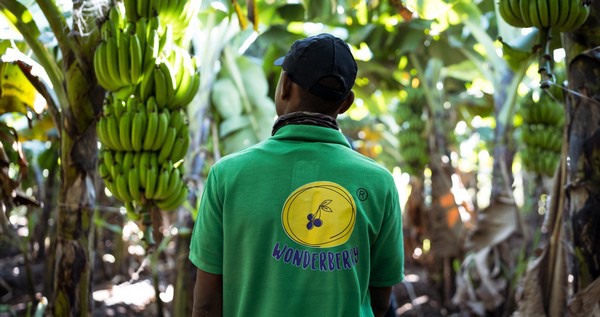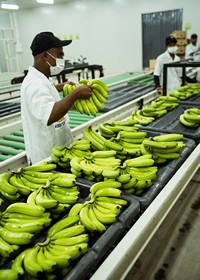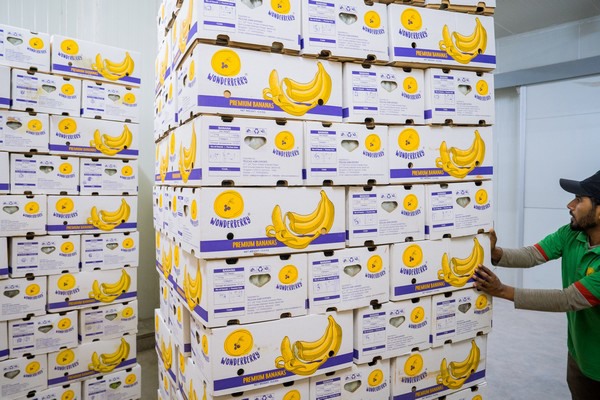Banana cultivation in India has come a long way in the past few decades, says Ajay Chopra, founder of Indian fresh produce brand Wonderberry: “The Indian banana cultivation has seen a fair bit of evolution over the past two decades. For example, the change from flat irrigation technology to drip irrigation played a major part. The density of the banana cultivation went up, and naturally the yield increased significantly. This was important as India is the largest consumer of bananas. Only 0.7 per cent of India’s banana production is exported and as a country we do not import any bananas and are responsible for 26 per cent of the global banana production.”

As there is a large group of lower and middle-class citizens in India, bananas are grown for these customers. Therefore, the emphasis is on price, not quality, Chopra explains. “Since the Indian consumer is the receiver of most of the bananas India grows, there is a complete focus on price, not quality. An Indian consumer can easily buy six bananas for a low price and get his nutrients for the day in. Because of this, hardly any bananas are grown in India with export quality in mind. Farmers are not concerned with cosmetic aspects of their bananas, or the size of the product. However, as Wonderberry, we’re starting to take a serious look at the export possibilities.”
 When looking at what markets would be most interesting for the export of bananas, there is one particular market Chopra feels they’d do really well in: “The Middle-East is the best market for us, as it’s a huge market. We’d also be very comfortable sending shipments to this region, as other producers will have a very long transit time, whereas our bananas are only underway for about four days. To ensure we’ll have a major foothold in this market, we’ll have to continue improving the quality and shelf life of our bananas as much as possible in the coming years.”
When looking at what markets would be most interesting for the export of bananas, there is one particular market Chopra feels they’d do really well in: “The Middle-East is the best market for us, as it’s a huge market. We’d also be very comfortable sending shipments to this region, as other producers will have a very long transit time, whereas our bananas are only underway for about four days. To ensure we’ll have a major foothold in this market, we’ll have to continue improving the quality and shelf life of our bananas as much as possible in the coming years.”
For the past few years, Wonderberry has mostly procured their bananas from growers, but the company will hopefully harvest their very own bananas next year, Chopra explains. “As we’ve had very strong connections, we’ve bought the bananas from growers in our network up until now. This year, in May, we’ll start cultivating bananas in our very own plantations. This comes with challenges, and the shifting weather conditions in India would be one of them. Most more important is the availability of large tracts of arable land to cultivate the bananas on. Getting a contiguous 100 hectares is very difficult. Another challenge is getting the growing practices exactly right, in order to grow bananas that we can export.”

Chopra does feel India needs to improve its image, as most people expect quality of Indian fruit to be bad by default: “Finally, the perception of importing countries will have to change. Currently, India has an image problem with all of its fruits, except for grapes. When India is on a box, it is assumed the quality is bad, and thus a lower price should be paid. Thankfully our clients have learned about our focus on quality and have even started requesting other produce from us, such as mangoes, pomegranates and grapes.”
Despite the challenges ahead of banana export from India, Chopra feels there are definitely aspects Indian exporters can take advantage of. “Our big advantage is that the consumption markets are very close to us, compared to competing countries like the Philippines. However, with most of the Indian growers focusing on price, not quality, a sense of balance is missing. There currently is a ceiling on price, which doesn’t allow for better quality bananas. Hopefully we can prove that good quality bananas can be found from Indian fruit exporters,” he concludes.
For more information:
Paras Chopra
Wonderberry
Tel: +91 99990 20054
Email: [email protected]
www.wonderberry.in










